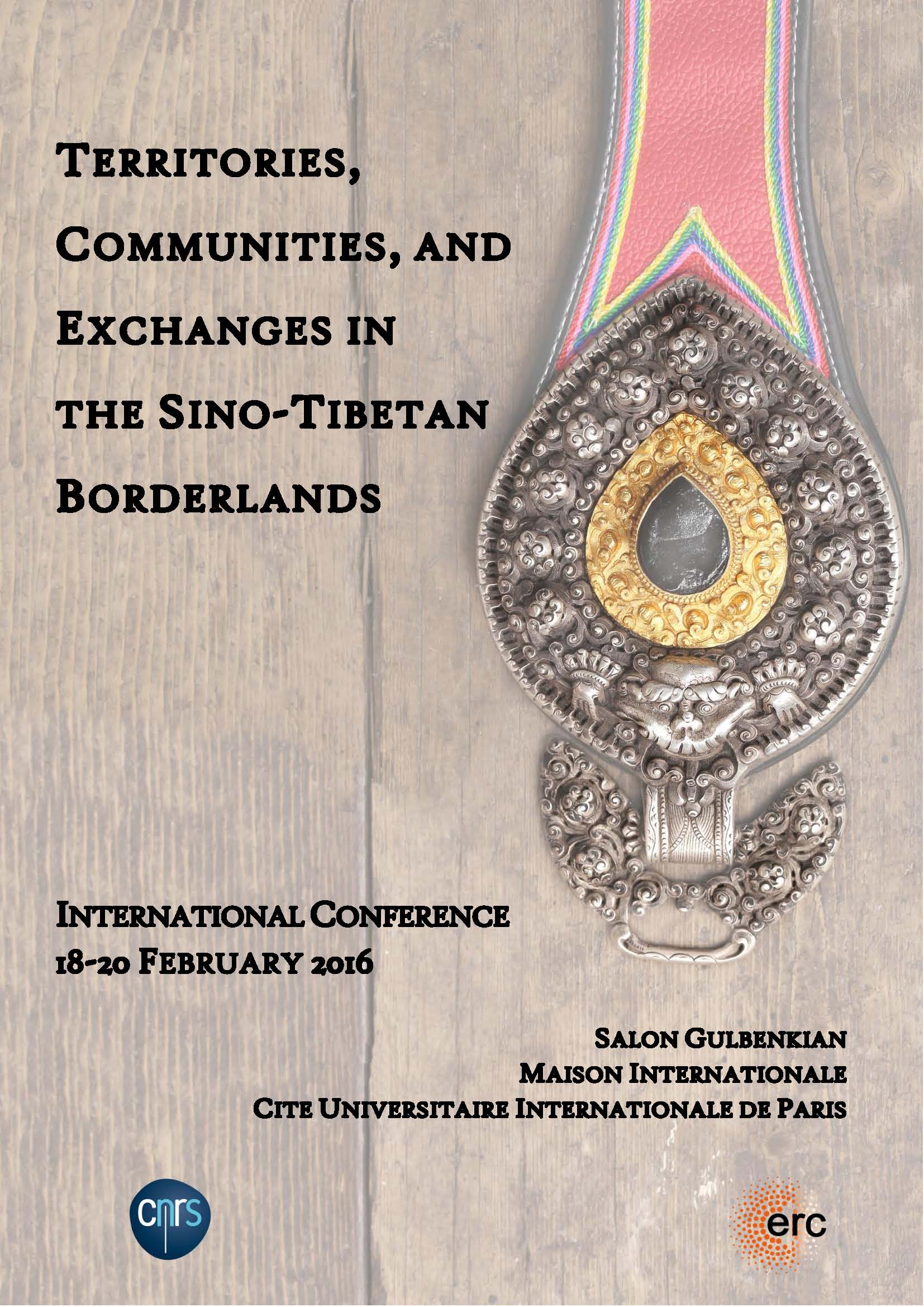Notice
Scott Relyea (Hamline University), " Settling Authority: Sichuanese Farmers in Early Twentieth Century Eastern Tibet "
- document 1 document 2 document 3
- niveau 1 niveau 2 niveau 3
Descriptif
From 1907 to 1911, some 4,000 commoners from the Sichuan Basin ventured west. Enticed by promises of large tracts of uncultivated land and three years of free rent, seeds, animals, and farm implements, they ascended the Tibetan Plateau seeking new lives for their families – and new benefits for a changing China. At the start of the twentieth century, Kham was a borderland on the cusp of political and societal transformation. Situated between Sichuan Province and central Tibet, its polities and population stood at the center of a local struggle for authority between Chengdu and Lhasa, a struggle with regional and imperial implications. The plan to settle the lush river valleys and high plains of Kham, to convert its purported wastelands into fertile farms, was one component of a comprehensive endeavor to end this struggle, to transform internal governance and exert control over the borderland sufficient to substantiate external assertions of sovereignty. Notices posted on yamen walls across the province appealed to the nascent nationalism of Sichuan’s poor farmers, urging them to emulate Euro-American pioneers who ventured into dangerous and distant lands in service to their nation. Beyond turning rocks into crops, once in Kham, they were to be ambassadors of “civilization,” modelling both ‘proper' farming and loyal society, supporting a parallel effort to acculturate the Khampas, to sever their affinity with Lhasa, transforming them into imperial subjects and citizens of the burgeoning Chinese state. This paper explores the reorientation of imperial frontier settlement policies wrought by newly globalizing norms such as sovereignty, the role of Sichuan settlers in establishing exclusive Chinese authority in the borderland, and projecting it to the global community.
International conference “Territories, Communities, and Exchanges in the Sino-Tibetan Kham Borderlands,” Februray 18-20, 2016. This conference is an outcome of a collaborative ERC-funded research project (Starting grant no. 283870).
For more information, please visit the project's Website: http://kham.cnrs.fr
Dans la même collection
-
Lucia Galli (University of Oxford), "The Price of Enlightenment: The Travel Account of Kha stag ʼDz…
Frontier territories characterised by intense socio-economic, political, and cultural inter-actions, in the mid-nineteenth century the easternmost fringes of the Tibetan plateau saw the rise of the
-
John Bray, "French Catholic Missions and Sino-Tibetan Trade: Local Networks and International Enter…
The Missions Étrangères de Paris (MEP) sent their first missionary on an exploratory mission to the Sino-Tibetan borderlands in 1847, and they retained a presence in the region until 1952. Together
-
C. Pat Giersch (Wellesley College), "Patterns of Inclusion and Exclusion Along Twentieth-Century Ch…
In recent years, increasingly sophisticated work has traced the remarkable changes in early twentieth-century state-building along China's southwestern and Tibetan borderlands. During this same period
-
Yudru Tsomu (Sichuan University), " Rise of a Political Strongman in Dergé in the Early Twentieth C…
This paper discuses rivalry for the throne of Dergé between 1890 and 1940. In the late nineteenth and early twentieth centuries, internecine feuds created a power vacuum serious enough to invite
-
Katia Buffetrille (Ecole Pratique des Hautes Etudes), " The Increasing Visibility of the Borderland…
For centuries, Central Tibet and its capital Lhasa were regarded as the center—as is obviously expressed in the very name of the region in Tibetan, dBus, “Center”—of political and religious life in
-
Mark Frank, " Chinese Physiocracy: Kham as Laboratory for the Agrarian Theory of China "
When a nation-state looks to intensive agriculture for its national essence, what are the implications at the local level? This paper looks at agricultural colonization efforts (tunken屯垦) of the
-
Chen Bo (Sichuan University), “House Society” Revisited "
In this paper, I will begin by considering the concept of “house society” and its applicability to Southwest China. I ask the question of why no scholar, Levi-Strauss included since he originally
-
Dáša Mortensen (University of North Carolina at Chapel Hill), " Wangchuk Tempa and the Control of G…
This paper examines the fascinating life of Wangchuk Tempa 汪学鼎 (1886-1961), the de facto early-twentieth-century political and military leader of Gyalthang (rGyal Thang) in southern Kham, in order to
-
Isabelle Henrion Dourcy (University of Laval), "Making Movies in the Gesar Heartland: The Burgeonin…
This conference is an outcome of the collaborative ERC-funded research project “Territories, Communities, and Exchanges in the Sino-Tibetan Kham Borderlands” This research project focuses on the
-
Stéphane Gros (Centre National de la Recherche Scientifique), "Matrifocality and the House in Drapa…
GrosStéphaneThe practice of a non-contractual, nonobligatory, and nonexclusive visiting sexual system among a matrilineal group in Southwest China has generated as much interest in anthropology as in the mass
-
Tenzin Jinba (National University of Singapore), " Two Gyalrong Weddings Under Fire: Rethinking of …
Two weddings in 2009 and 2015 respectively have received wide publicity among Tibetans and others within and out of China. The first was that of Lobsang Dundrup, a renowned singer from Gyalrong, and
-
Eric Mortensen (Guilford College)," Boundaries of the Borderlands : Mapping Gyalthang"
This project seeks to discern the physical and conceptual boundaries of the Tibetan region of Gyalthang, in southern Kham. At issue are questions about the relationships between older













